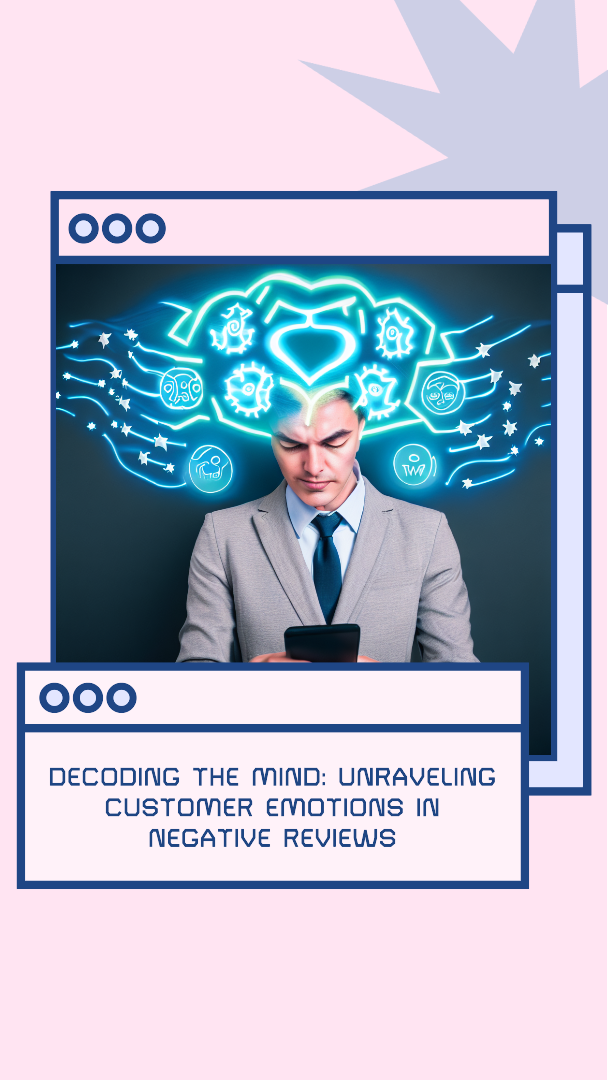Customer evaluations have a tremendous impact in the rapidly changing digital age when opinions and experiences can be shared with only a few clicks.
These evaluations are crucial in forming consumer opinions of brands, affecting purchasing choices, and assisting companies in refining their goods and services.
Why do negative reviews carry such emotional weight?
Negative reviews often stem from unmet expectations, frustration, or disappointment, triggering powerful emotions in customers. These emotions make negative experiences more memorable and impactful, driving individuals to share their grievances and influencing potential customers.
Negative reviews often hit a nerve that resonates deeply inside organizations, while favorable ones may be an occasion for celebration. Understanding the psychology behind these unfavorable evaluations may provide insightful knowledge into the complex realm of consumer emotions and open the door to significant advancements.
The Weight of Negativity: Emotional Impact of Negative Reviews

Negative evaluations have a significant emotional impact in addition to being simply words on a screen. Customers share more than simply their experiences with a good or service when they voice their displeasure, annoyance, or disappointment. They are expressing their feelings, and these feelings may provide a ton of information about what went wrong and how companies might fix these problems.
According to research, unpleasant emotions are often stronger and more remembered than good ones. “Negativity bias,” a phenomenon, suggests that clients are more likely to recall and discuss bad events. Negative evaluations often result from disappointment, unfulfilled expectations, or a feeling of being underappreciated. Businesses might learn important details about the problems that their consumers are experiencing by digging into the emotions that are conveyed in these evaluations.
Peeling Back the Layers: Analyzing Emotional Triggers

Businesses need to go further and examine the emotional causes that lead to unfavorable reviews in order to fully comprehend them. Is the merchandise, the customer service, or the communication the issue? Each of these triggers has the power to elicit a range of emotions, from anger and irritation to sadness and disappointment.
By identifying the specific triggers and corresponding emotions, businesses can tailor their responses and solutions to address the root causes effectively.
Furthermore, understanding the emotional journey of a customer, from their initial interaction with a product or service to their decision to leave a negative review, can provide a comprehensive picture of pain points. Did the customer experience a gradual buildup of frustration, or was it a sudden disappointment? Mapping this emotional journey can help businesses pinpoint areas that need improvement.
Turning Negative Reviews into Positive Outcomes

While negative reviews may initially seem like a setback, they present a unique opportunity for businesses to demonstrate their commitment to customer satisfaction and improvement. Responding promptly, empathetically, and constructively to negative reviews can showcase a company’s dedication to addressing concerns and making necessary changes.
By acknowledging the emotions expressed in negative reviews and demonstrating a genuine desire to rectify the situation, businesses can not only retain the dissatisfied customer but also showcase their brand’s integrity to potential customers who may come across the review. Transforming a negative experience into a positive outcome can lead to customer loyalty and advocacy.
The Path to Improvement: Using Negative Reviews as a Springboard

Negative reviews, when approached with the right mindset, can be a valuable resource for improvement. They provide a direct line to customers’ unfiltered opinions and experiences, allowing businesses to identify blind spots and areas that need enhancement. Even though it might be challenging to hear constructive criticism, it can act as a spark for development and creativity.
Businesses should view negative feedback as an opportunity to review their processes, enhance their products, and invest in employee training. Companies may demonstrate their dedication to ongoing development and enhance their market position by responding to the concerns raised in unfavorable evaluations.
Conclusion
In the realm of business, unfavorable evaluations are more than simply a source of worry; they can provide insight into the feelings of consumers. Decoding the psychology behind these negative reviews offers a unique perspective on the pain points, emotional triggers, and areas for improvement that businesses might otherwise overlook. By recognizing the power of negative emotions and transforming them into positive outcomes, companies can build stronger customer relationships, enhance their brand reputation, and ultimately drive long-term success.
FAQ’s
How can businesses analyze the emotional triggers in negative reviews?
To analyze emotional triggers, businesses should examine the language and context of negative reviews. Look for patterns in the reasons behind dissatisfaction—whether it’s a faulty product, poor service, or a communication breakdown. By identifying these triggers, businesses can tailor solutions and responses accordingly.
What exactly is “negativity bias,” and how does it apply to bad reviews?
The term “negativity bias” describes a human propensity to prioritize unpleasant events and feelings above good ones. This bias is why negative reviews tend to be more memorable and shared more widely. Understanding this bias helps businesses grasp the impact of negative reviews on perceptions and decisions.
How can negative reviews be turned into positive outcomes?
Responding empathetically and constructively to negative reviews demonstrates a commitment to customer satisfaction. Engaging with dissatisfied customers promptly and offering solutions not only resolves their issues but also showcases the brand’s dedication to improvement. This can lead to customer loyalty and positive word-of-mouth.
What’s the significance of mapping the emotional journey in negative reviews?
Mapping the emotional journey helps businesses understand the sequence of events that led to a negative experience. It offers insights into whether the dissatisfaction was a gradual buildup or a sudden disappointment. This knowledge guides improvements in various touchpoints of the customer journey.
How can businesses use negative reviews as a springboard for improvement?
Negative reviews provide valuable feedback that can identify blind spots and areas for enhancement. Businesses should view them as opportunities to refine processes, offerings, and staff training. Addressing the issues raised in negative reviews showcases dedication to growth and customer satisfaction.

